
Filter News
Area of Research
- Biological Systems (1)
- Biology and Environment (25)
- Computational Biology (2)
- Computational Engineering (1)
- Computer Science (1)
- Energy Science (85)
- Energy Sciences (1)
- Fusion and Fission (6)
- Isotopes (6)
- Materials (41)
- Materials for Computing (4)
- Mathematics (1)
- National Security (3)
- Neutron Science (19)
- Nuclear Science and Technology (6)
- Quantum information Science (1)
- Supercomputing (21)
- Transportation Systems (2)
News Type
News Topics
- (-) Biomedical (55)
- (-) Clean Water (31)
- (-) Energy Storage (69)
- (-) Molten Salt (7)
- (-) Physics (43)
- (-) Transportation (71)
- 3-D Printing/Advanced Manufacturing (93)
- Advanced Reactors (26)
- Artificial Intelligence (94)
- Big Data (67)
- Bioenergy (86)
- Biology (102)
- Biotechnology (29)
- Buildings (55)
- Chemical Sciences (50)
- Composites (22)
- Computer Science (159)
- Coronavirus (31)
- Critical Materials (18)
- Cybersecurity (17)
- Education (2)
- Emergency (4)
- Environment (172)
- Exascale Computing (52)
- Fossil Energy (7)
- Frontier (46)
- Fusion (49)
- Grid (56)
- High-Performance Computing (94)
- Hydropower (12)
- Irradiation (2)
- Isotopes (40)
- ITER (7)
- Machine Learning (54)
- Materials (89)
- Materials Science (98)
- Mathematics (12)
- Mercury (10)
- Microelectronics (3)
- Microscopy (38)
- Nanotechnology (33)
- National Security (66)
- Neutron Science (112)
- Nuclear Energy (90)
- Partnerships (37)
- Polymers (21)
- Quantum Computing (39)
- Quantum Science (59)
- Security (19)
- Simulation (53)
- Software (1)
- Space Exploration (23)
- Statistics (3)
- Summit (48)
Media Contacts

A team of researchers at Oak Ridge National Laboratory have demonstrated that designed synthetic polymers can serve as a high-performance binding material for next-generation lithium-ion batteries.

Scientists have discovered a way to alter heat transport in thermoelectric materials, a finding that may ultimately improve energy efficiency as the materials
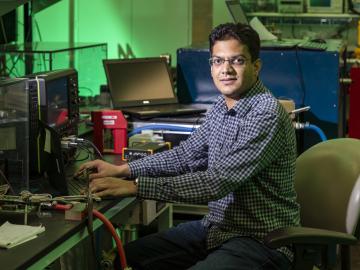
Galigekere is principal investigator for the breakthrough work in fast, wireless charging of electric vehicles being performed at the National Transportation Research Center at Oak Ridge National Laboratory.
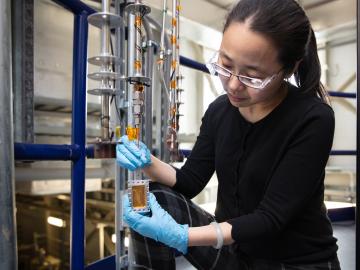
Researchers at the Department of Energy’s Oak Ridge National Laboratory, Pacific Northwest National Laboratory and Washington State University teamed up to investigate the complex dynamics of low-water liquids that challenge nuclear waste processing at federal cleanup sites.

Ionic conduction involves the movement of ions from one location to another inside a material. The ions travel through point defects, which are irregularities in the otherwise consistent arrangement of atoms known as the crystal lattice. This sometimes sluggish process can limit the performance and efficiency of fuel cells, batteries, and other energy storage technologies.
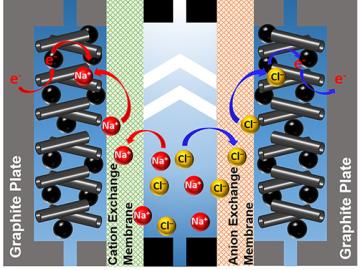
A team of scientists led by Oak Ridge National Laboratory used carbon nanotubes to improve a desalination process that attracts and removes ionic compounds such as salt from water using charged electrodes.

Using artificial neural networks designed to emulate the inner workings of the human brain, deep-learning algorithms deftly peruse and analyze large quantities of data. Applying this technique to science problems can help unearth historically elusive solutions.

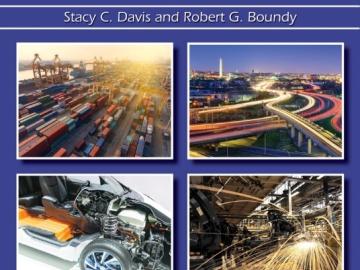
Oak Ridge National Laboratory’s latest Transportation Energy Data Book: Edition 37 reports that the number of vehicles nationwide is growing faster than the population, with sales more than 17 million since 2015, and the average household vehicle travels more than 11,000 miles per year.
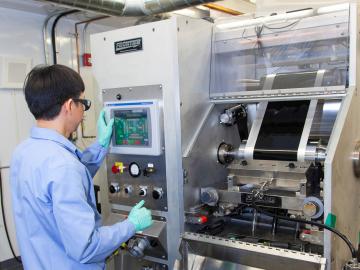
The use of lithium-ion batteries has surged in recent years, starting with electronics and expanding into many applications, including the growing electric and hybrid vehicle industry. But the technologies to optimize recycling of these batteries have not kept pace.


